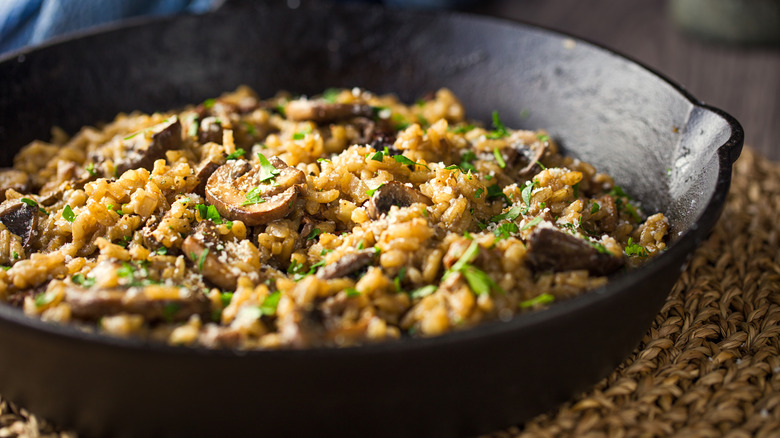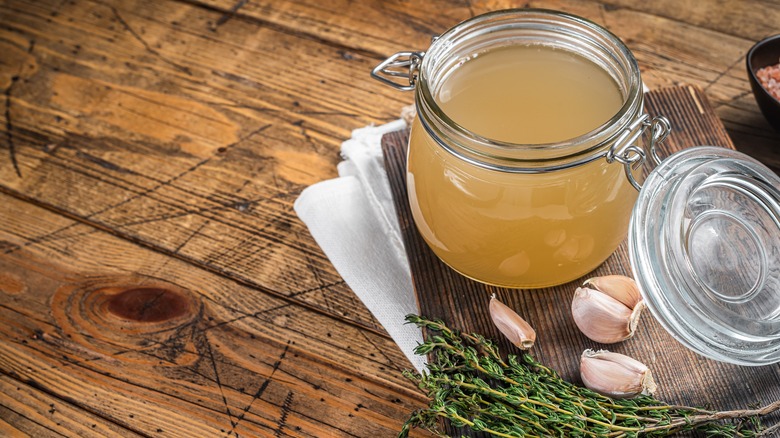Homemade Stock Is The Secret Ingredient For Even Better Risotto
Many things can go wrong when making risotto, such as forgetting to toast the rice, adding too much liquid, or neglecting to stir, resulting in burnt rice. That said, once you get used to the mechanics, risotto becomes one of those reliable weekday dishes you can prepare in 30 minutes.
Risotto is also a fantastic option when you're unsure what to make, as many of its key ingredients are usually on hand. For example, arborio rice is shelf stable, everyone should have an onion, leftover wine can be kept in the fridge, and stock is easily bought at the store. However, we think homemade stock is the way to go. Taking the time to make this ingredient positively impacts risotto because it allows the flavors to concentrate, contrasting the flavor profile of a generic, watery store-bought stock.
When you want risotto to achieve a higher plane of existence, you can customize homemade stock to complement the primary flavor component. Pick a mix of different mushroom varieties and make them into stock for a mushroom risotto. Save the lobster carcass and turn it into a rich stock for a lobster risotto. Give your lobster risotto a heavier umami punch by combining mushroom and lobster stock for a unique take. Stock can be made fresh when you have more time and feel like going the extra mile to create a special treat or made ahead and saved for later.
How to use homemade stock most effectively
As home cooks, it's fun to experiment with different homemade stocks to amplify risottos, but it's not always ideal to take the time to do so on cooking day. For those who'd like to make any risotto on command, generic homemade chicken or vegetable stock are two versatile options. These can be made well in advance, are a great way to use old vegetable and chicken scraps, and can be stored in the freezer for up to three months, according to the USDA. Additionally, you can pre-portion the frozen stock in mason jars according to the amount you typically use. All you need to do is defrost frozen stock the night before and bring it to temperature on the stove.
One important thing to remember with homemade stock is that, typically, no salt is added when making them. If chicken or vegetable stock already contains salt, it can result in a heavier concentration in the risotto due to how much liquid gets constantly reduced during the cooking process. Most stock recipes call for no salt, which allows you to control how seasoned the final product becomes. The best time to adjust for salt when cooking risotto is to wait until the end when it's the right consistency and texture. Stop cooking, adjust the salt to taste, and fold in unsalted butter to give your risotto a glorious shine.

